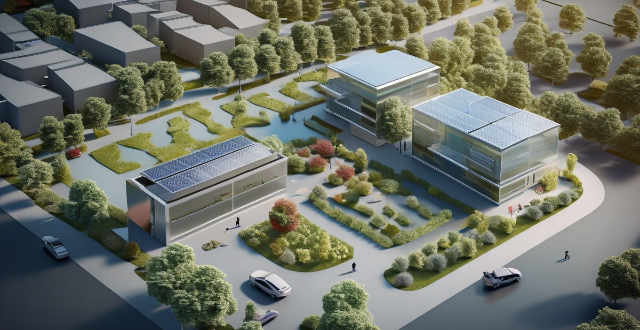Ecological design significantly impacts energy efficiency in buildings through various strategies like passive solar design, advanced insulation, renewable energy sources, energy-efficient appliances, water conservation, and sustainable material choices. These practices reduce energy consumption, lower operational costs, and minimize environmental harm.

Ecological Design and Its Impact on Energy Efficiency in Buildings
Ecological design, also known as sustainable or green design, is an approach to architecture that focuses on reducing the negative impact of buildings on the environment. This includes minimizing energy consumption, using renewable resources, and reducing waste. The impact of ecological design on energy efficiency in buildings is significant and multifaceted.
Passive Solar Design
One way ecological design improves energy efficiency is through passive solar design. This involves orienting a building to take advantage of natural sunlight for heating and lighting. For example:
- South-facing windows can capture more sunlight in the winter, reducing the need for artificial heating.
- Shading devices like overhangs or trees can block out excess sunlight in the summer, reducing the need for air conditioning.
Insulation and Air Tightness
Proper insulation and air tightness are crucial for energy efficiency. Ecological design often incorporates advanced insulation materials and techniques to minimize heat loss or gain. For instance:
- Spray foam insulation fills gaps and crevices, preventing air leakage.
- Weatherization measures such as sealing windows and doors can further enhance air tightness.
Renewable Energy Sources
Ecological design often includes the use of renewable energy sources like solar panels, wind turbines, or geothermal systems. These technologies can significantly reduce reliance on non-renewable energy sources. Examples include:
- Solar photovoltaic panels that convert sunlight into electricity.
- Geothermal heat pumps that use the earth's constant temperature for heating and cooling.
Energy-Efficient Appliances and Lighting
Another aspect of ecological design is the use of energy-efficient appliances and lighting. This not only reduces energy consumption but also lowers operational costs over time. Some examples are:
- LED lighting, which uses less energy than traditional bulbs.
- Energy Star certified appliances, which meet specific energy efficiency guidelines.
Water Efficiency
Water efficiency is also part of ecological design, as it relates to overall resource conservation. Strategies include:
- Rainwater harvesting systems that collect rainwater for later use.
- Low-flow fixtures like showerheads and faucets that reduce water consumption without sacrificing performance.
Material Choices
The selection of materials in ecological design plays a role in energy efficiency. Sustainable materials have a lower environmental impact and can contribute to energy savings. For example:
- Recycled materials reduce waste and save energy compared to producing new materials.
- Local materials require less transportation, reducing fossil fuel emissions associated with shipping.
Conclusion
Ecological design has a profound impact on energy efficiency in buildings by incorporating strategies such as passive solar design, advanced insulation, renewable energy sources, energy-efficient appliances, water conservation, and sustainable material choices. These practices not only reduce energy consumption but also lower long-term operational costs while minimizing environmental harm.